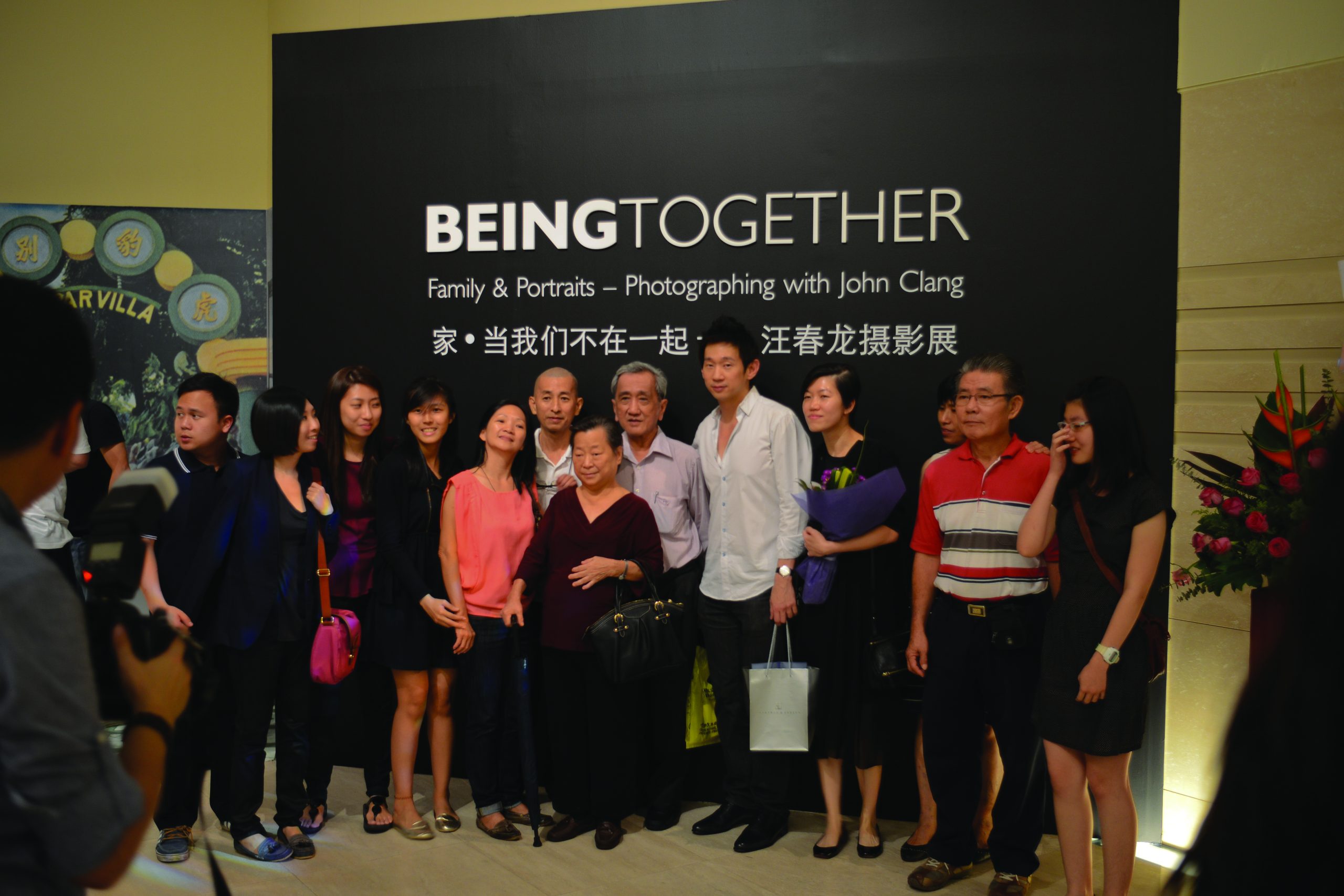Since Singapore gained independence in 1965, its economic, social and educational headways have stood out on the world stage, worthy of study by politicians, economists, sociologies, and educators alike. Yet its national and cultural identity is often called to question. Given its diverse immigrant historical cultural hinterlands far and wide, this young nation’s population composite is unsurprisingly inhomogeneous and mixed. Different artists have dealt with the situated complexities of identity and culture through different art forms and distinct styles.
Artist-photographer John Clang’s solo exhibition is one such interjection in this on-going discourse, bringing photographic representation and facet of Singaporean families to the spotlight. The ‘Family’ is widely accepted as the basic building block of the community, society and nation and is a theme Singaporeans are concerned about.

Being Together: Family & Portraits (2010), a grand solo exhibition by John Clang can be appreciated in two ways: first, as a lucid exposition on Singaporean identity and family relationships in the context of globalisation; second, as a loaded and engaging de-construct of the family portraiture genre in the light of burgeoning demand for image-making tools in a media hungry society. The photography style of Clang is unmistakable.
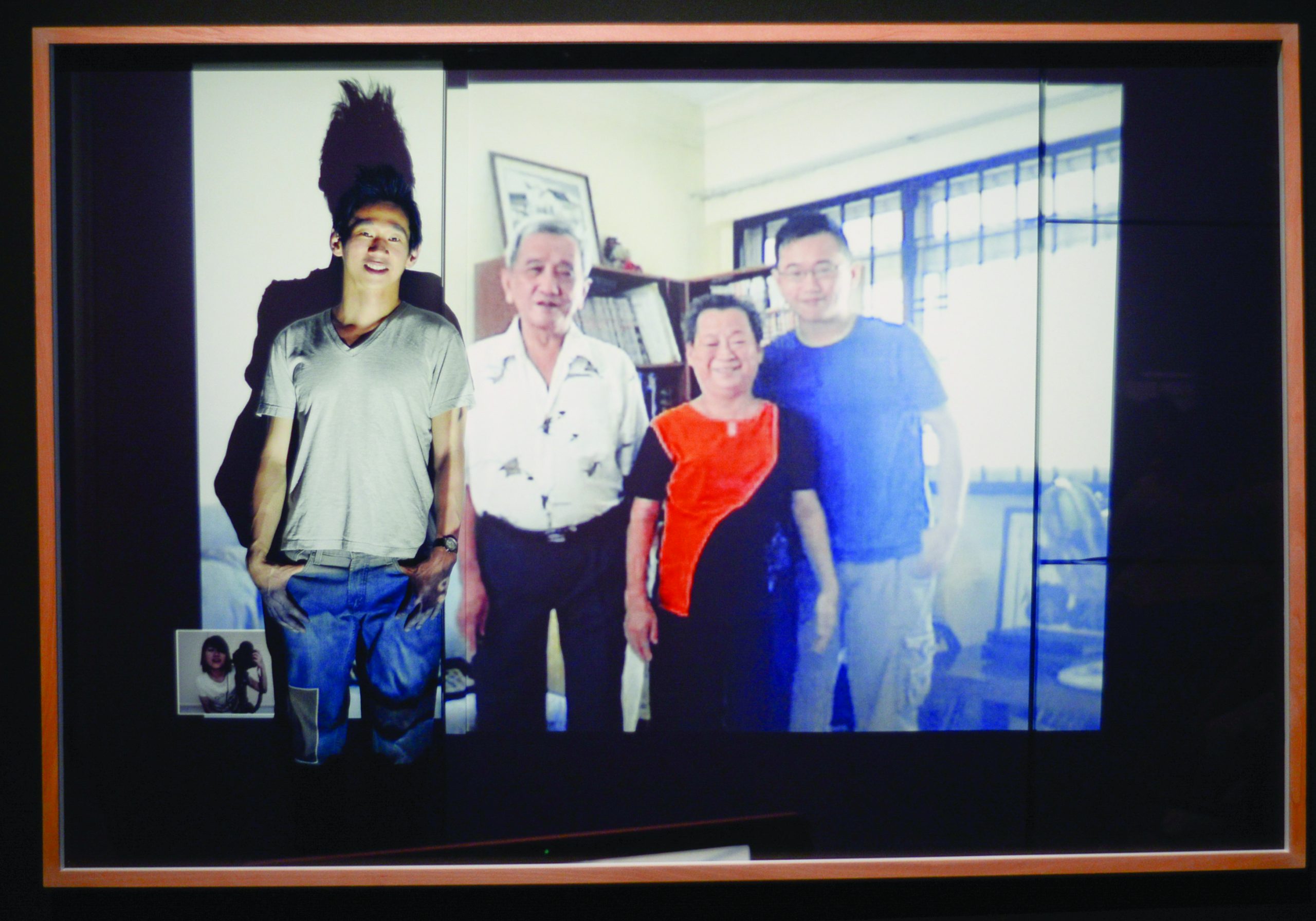
Being Together (Family), 2010, Fine art archival print, 40 X 60 inches
It is raw, divulging and compelling for a second look.
The five series in the exhibition are sentimental on many levels. Named Being Together, The Moment, Fear of Losing the Existence, Guilt and Erasurem are clearly portraitures of Singaporeans. As the curator for this exhibition Szan Tan aptly summarised: “Clang emphasizes the profound ordinariness of a family portrait for each depicted moment is ultimately to unite and not to idealize, glorify or celebrate, unlike traditional studio portraits… The simultaneous feeling of being part of and yet physically apart from one’s family is precisely what Clang had hoped to achieve.”
A tiny scribbled Confucius text on the wall suggests the personal significance of Clang’s reunion portraiture technique. The text, written in Mandarin1, loosely implies and translates as “If travel is a must, there must be a reason”. This refers to the personal responsibilities the artist has towards his own parents, and his temporary relocation overseas is a justified endeavour. The quote is an emblem of filial piety, a strongly held core value in Asian culture, as well as implying the concern parents may have when their children travel. From this text, we can feel the personal mission of Clang’s portrait series, as a means of connecting with his own parents and brother based in Singapore while he worked in New York. In this exhibition, he merely extended his photographic methodology to bring other people separated by distance and time zones together.
Being Together is the most extensive series out of five in the solo exhibition. It combines the warm, fuzzy, feeling we have towards taking family portraits with our fascination with communication technology. The photographs in this series show a family member and immediate kin standing or seated in a darkened room, against a projected Skype image of his or her family. From the title of each photograph, we know one party is abroad and the other lives in Singapore. Why the family members are separated by distance is not immediately known. From the homely furnishing, the viewer might infer rewarding circumstances as pull factors: for work, study, or extensive sojourning. The viewer might be able to tell the social status of the sitters from the objects and furniture in the photograph and projected image. Likewise, the body language of the sitters might well reflect their thoughts, feelings, and kinship ties to other people in the image.
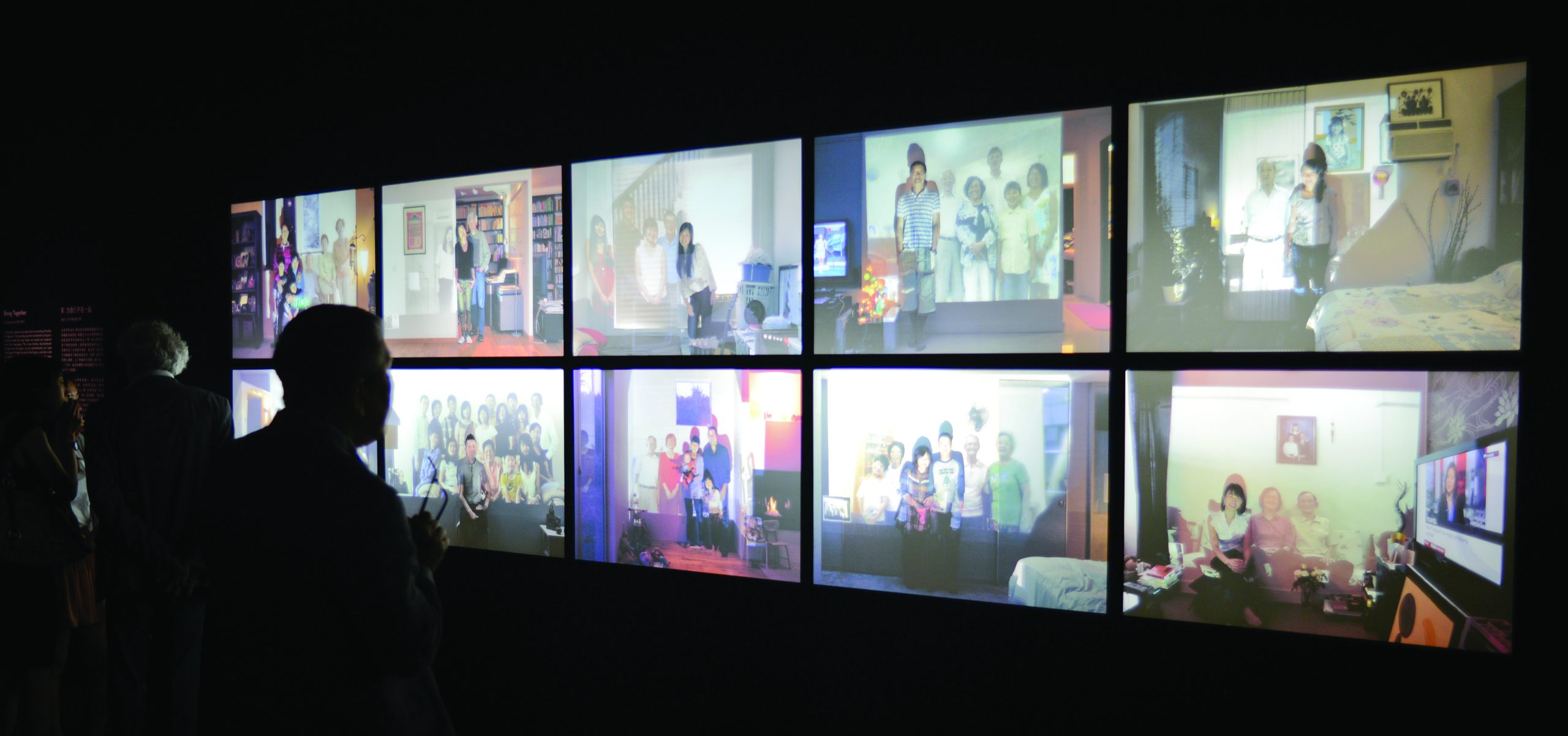
The habit and venture of taking family portraits is not unfamiliar to a Singapore audience. It can be an ordinary and casual snapshot against a perfectly banal scene, or an elaborate constructed studio photograph. Most Singapore households may have one hanging or displayed in the living room, bedroom, or communal place at home. Photographic portraits depicting newlyweds, children, family members or friends are common. Anecdotally, If there was a hierarchy for portraits, the family portrait might rank highly because it is displayed more so than other photographs. Quite simply, family portraits express family ties, close relationships, personal histories, and treasured stories about one’s family and their lives. If one wanted to be cynical then these family photographs portray how the families want to be seen—happy, idealized.
The images by Clang in this series are unsettling in three ways. First, the shadow cast by the figure nearest to the photographer disrupts the image, bringing attention to a suggested ruptured distance between the people in the photographs. Second, the blurriness of the figures, what is sharper, clearer or nearer to the photographer, implies a visual hierarchy. The (distant) background becomes a wispy connection with the foreground, marking the separation starkly. The image (and photographer) becomes a witness to a forlorn attempt to reunite family members in a virtual space. Third, it reveals our assumption of and value for a typical family structure in Singapore: parents with children or best with grandchildren.
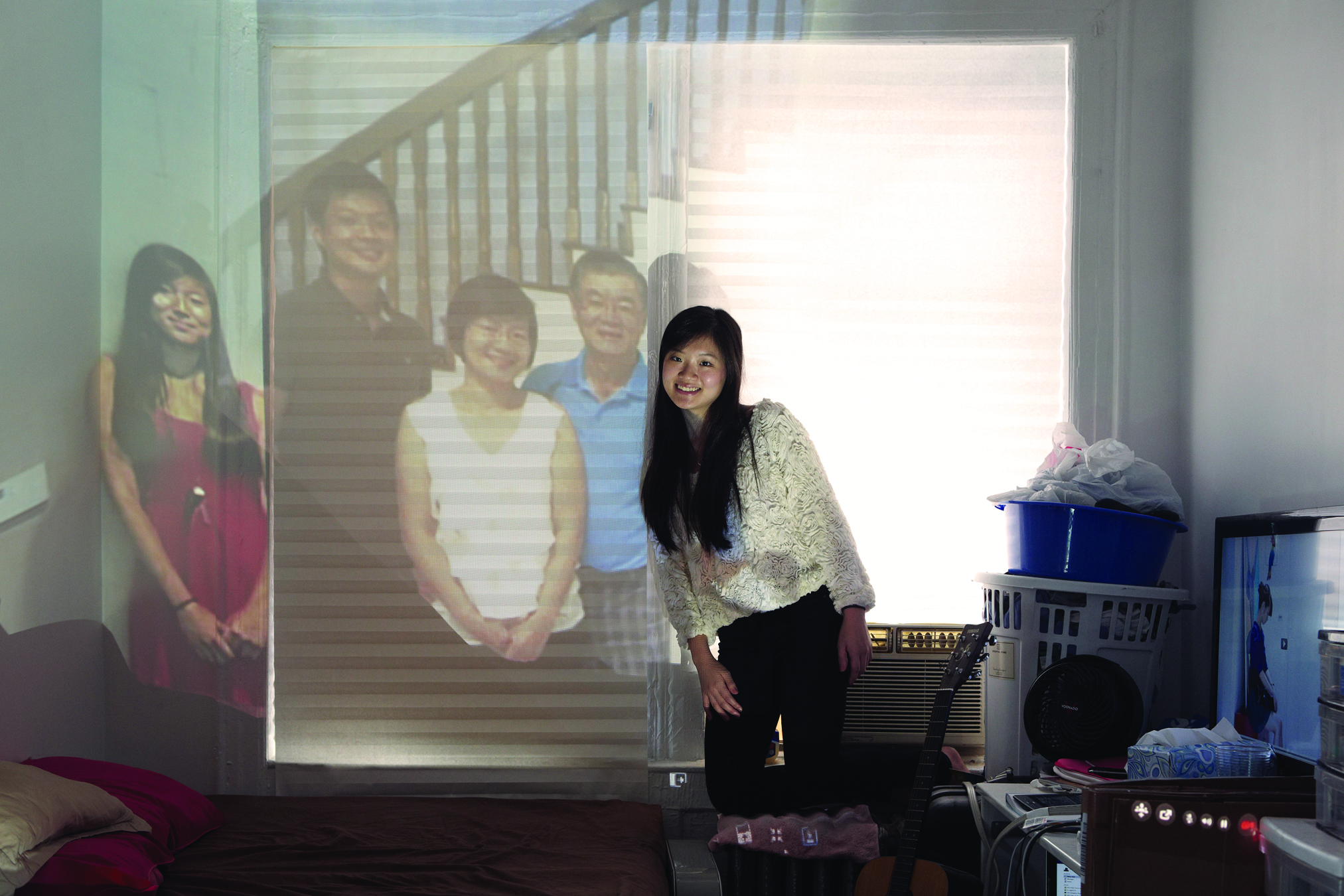
Being Together – Toh Family (New York, Los Angeles, Yio Chu Kang), 2012.
The photographs in this series plausibly represent family reunions for many Singaporeans in the near future. As Singapore embraces globalization, just as how its immigrant forefathers had, it would be soon be easy to find relatives working at some point in time in another part of the world. How exotic those locations depend on their appetite for adventure, opportunities or dire circumstances. These reunions are as real as they are, enabled by Internet video conferencing technology. If we want to, we can be emotionally connected to a person talking on the other end of a telephone call despite the distance. Conversely, the advent of smart phones might well have crippled our face-to-face communication skills, or introduced a poor excuse not to hold conversations with love ones sitting next to each other. Thus one could argue that the artist’s use of Skype in this photographic series is an acknowledgement of the evolving family nucleus2 in Singapore and their dependence on Internet-based communication technology to converse. If Singaporeans want to keep a particular standard and way of living evident in the photographs, they might have to travel, sojourn or relocate with their family or venture out alone. The Internet would be an important communication conduit to stay connected. The Internet is the port of call wherever we are.
The family is also the subject matter in The Moment series. Accordingly to Clang, this series explores a moment of family members being photographed together. He was interested in revealing the underlying ease or tension within “family hierarchies, gendered roles and inter-generational relationships”. Each triptych reveals a different family dynamic. In this series, each family is photographed from different viewpoints, like a “time-spliced” montage. The edges of the triptych photographs cruelly crop the sitters, resulting in an uneasy triptych picture. If photographs capture a certain truth about its subject, this presentation is more telling about the sitters. As a series, the concept of an idealized happy family is called to question. The individuality of the sitters might be revealed or concealed by their poses and body language: Is that a genuine smile or a deliberate wry one? Are the hands open and receptive, or tensed and clenched? Is the awkward cropping omitting something in order for our imaginations to fill in?
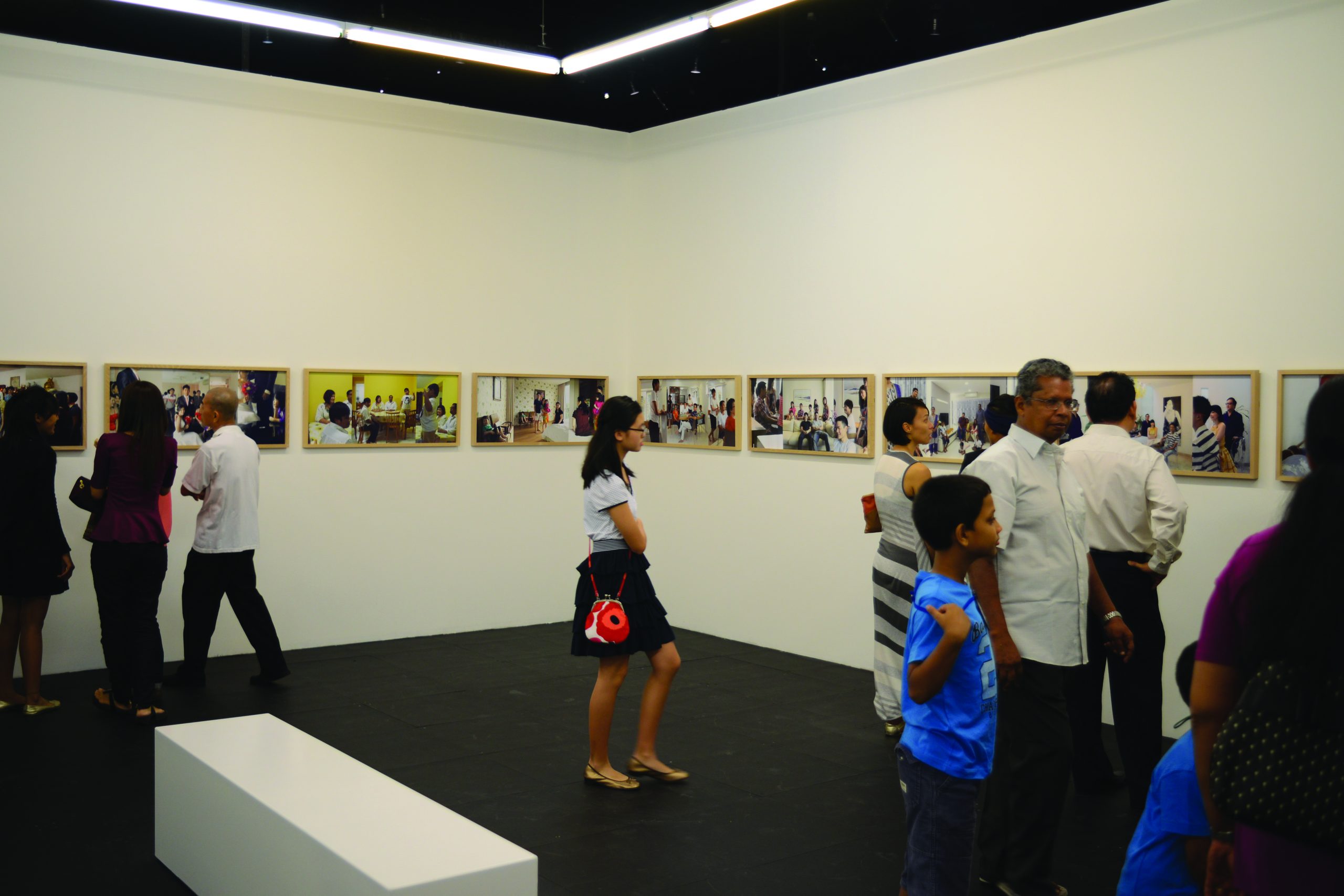
Assuming photographs can be read like texts, Clang’s photographic gesture and methodologies in both Being Together and Moment Series might be perceived as a deconstruction of the idea of a family. The family is often considered the most basic and universal construct in a society. The idea of the family can be considered important from cultural, moral, economical, religious and sociological perspectives. Any changes to these perspectives and values would change how we view the importance of a family as a way of life. According to the Singapore Department of Statistics, there are six household living arrangements3 that are quite telling of Singapore’s evolving family nucleus and living arrangements. Household living arrangements have evolved over the years in tandem with changes in the population’s life style, age structure as well as marriage and family formation preferences. The number of couple-based households with children declined from 66 per cent in 1990 to 56 per cent in 2010; correspondingly, couple-based households without children increased from 8.4 per cent to 14 per cent in 2010 while living alone households increased from 5.2 per cent to 12 per cent in 2010. These figures are consistent with population consensus figures on Singapore’s falling birth rate and increasing number of Singaporeans who chose to remain unmarried. By dissecting and fragmenting an image, we we might begin to see this as symbolising a fragmenting family structure.
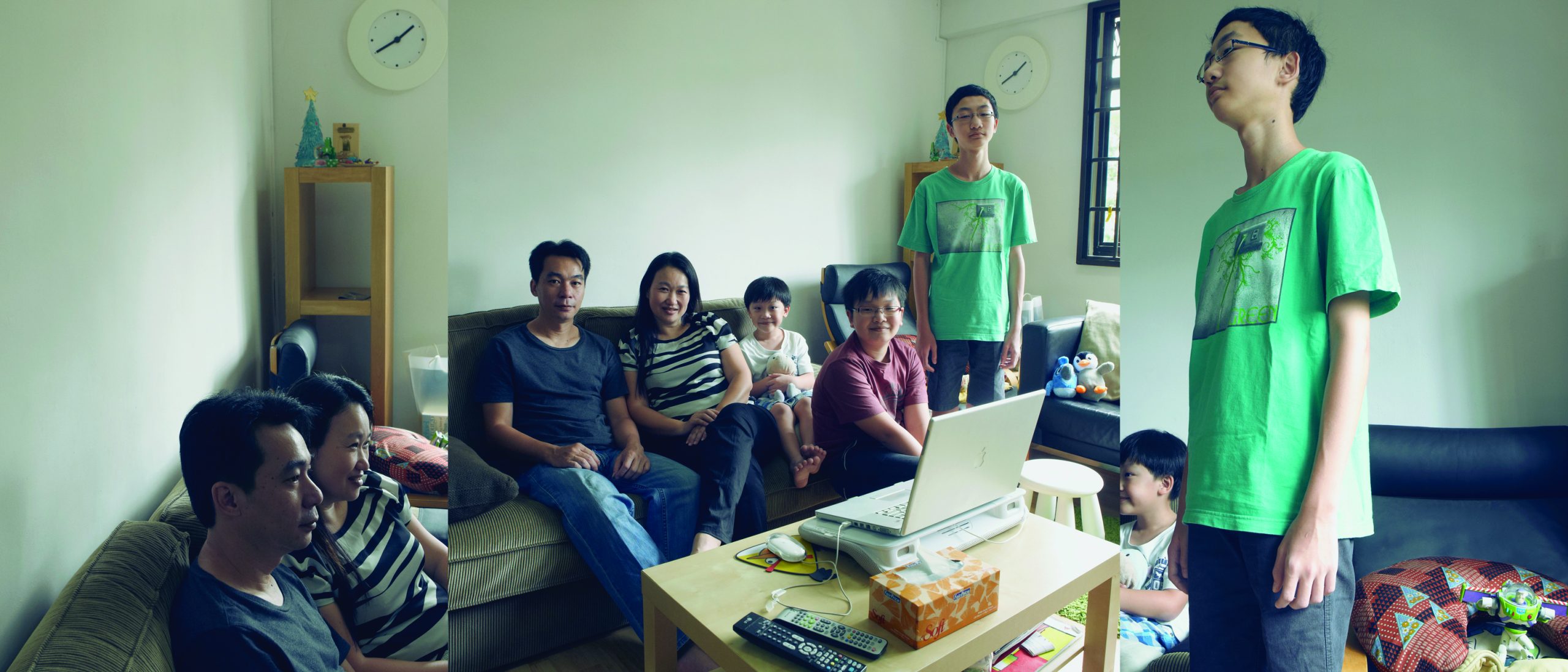
The Moment, 2011-2012. Courtesy of the artist John Clang.
According to Susan Sontag, “picture taking has been interpreted in two entirely different ways: either as a lucid and precise act of knowing, or conscious intelligence, or as a pre-intellectual, intuitive mode of encounter”. To Sontag, a photograph is often taken as an ordained and determined truth yet it is capable of becoming a site to unearth something one might not yet know. Clang’s photographs would be befitting to illustrate this concept, presenting images of Singaporean families for public scrutiny, thereby showing an outward representative Singaporean Identity. These families, like strangers we pass when we commute, are familiar yet atypical. A Singaporean might feel they know them from the objects and interior spaces portrayed. However, an informed viewer/reader will understand that photographs are mediated subjective constructs, and like poems, they elicit multiple interpretations; we create different personal meaning and significance for Clang’s series related to families. Yet identities are not constructed skin deep. We sometimes talk about personal identities, cultural identities or national identities. Identities, I would argue, are influenced by several factors that photographs are unable to represent fully and holistically: language, religion, class, education, professional, politics, values, beliefs, attitudes and deep-rooted culture. So we should hesitate to conclude that Being Together is illustrative of the Singaporean Identity.
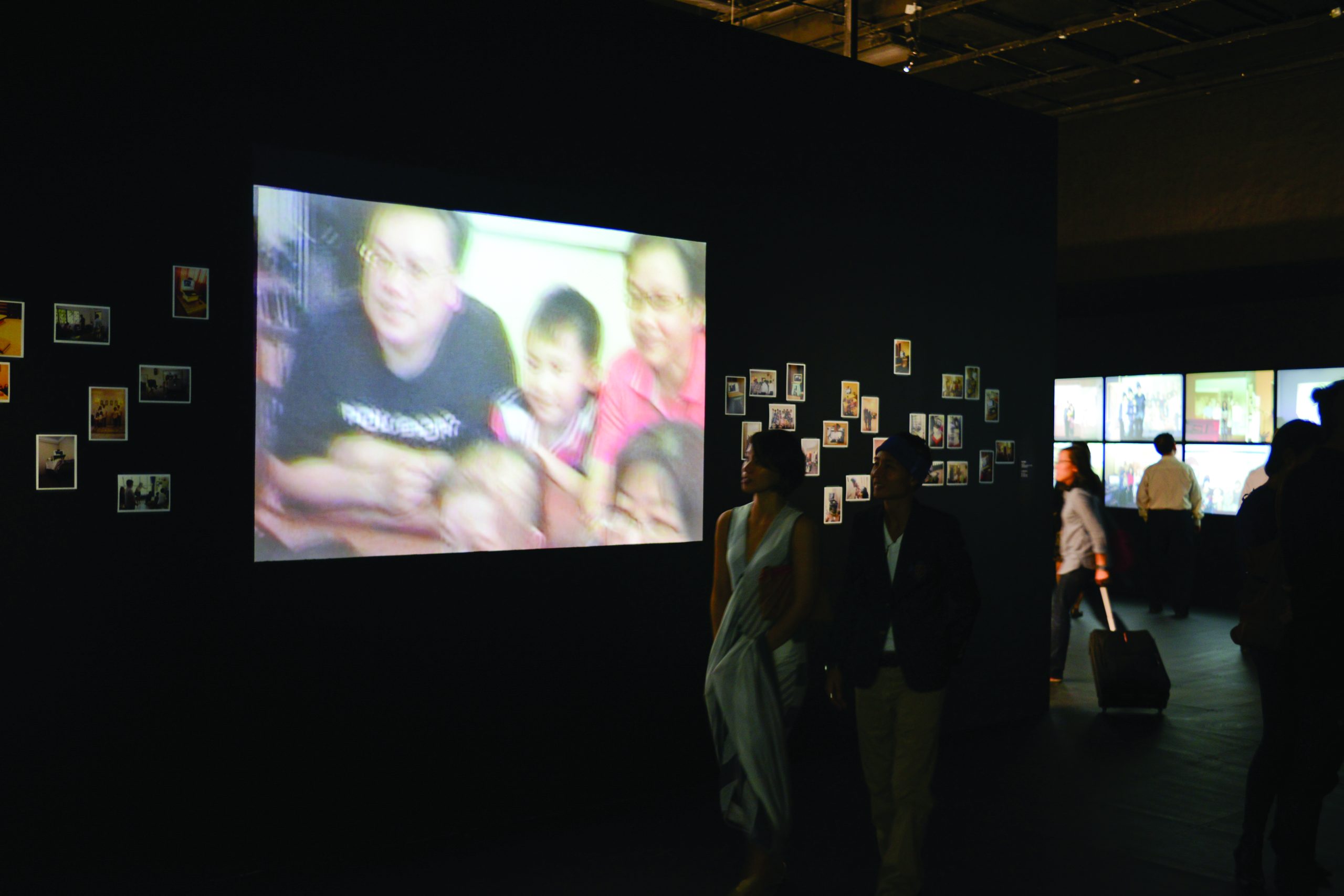
Clang’s methodologies could also be perceived as a deconstruction of photography as a visual language in its own right. The five series tackle and break the surface of an image. The time-honoured “rule of thirds” in photography, proportion, exactitude and texture of photographs are called to question. In some instances, the moving image is used to convey the process of taking a photograph, blurring the lines between preparation, the moment and the presentation of a ‘final’ image. In Being Together and The Moment, the compressed physical space in a photographic image is examined. In Being Together, the foreground and background exists in different time zones and locations and image is constructed from a physical presence and an image. In The Moment, the viewer has access to middle ground from the side, seeing things that would be traditionally blocked by the figures nearer the conventional picture plane. In contrast, Clang’s methodology in The Moment could be regarded as an antithesis to Henri Cartier-Bresson’s concept of decisive moment—which suggests how precise composition embodies the event being captured through photography. As an antithesis, one can imagine that every moment and instance is as precious as the next, and little intuition is needed to depress the shutter. In the Fear of Losing Existence, Guilt and Erasure Series, the identities of persons depicted in a photograph are deliberately concealed, criticizing both the editing and veracity of a photographic image. In Fear of Losing Existence, the faces are ominously blurred out rejecting representation. Likewise, in Erasure, the figures are reduced to pencil-like drawings, questioning the function and strength of photographs as surrogate for our memories. In Guilt, the faced are blanked out by correction fluid and scribbled with a handwritten text written over the dried white patch and as a repentant repeated text. This handwritten text adds more emotional charge than the original direct image.
As a tribute to the history of Family studios, three large backdrops were set up outside the exhibition gallery inviting visitors to take photographs with them. An image of a plain Housing Development Board window is cleverly included to link this exhibition to what most Singaporeans are familiar with, celebrating the everyday and notions of ordinariness. It might even encourage families to take their next family portrait by their own window. Next to this are two other backdrops forming two scenes from the old Raffles Museum and once popular theme park Haw Par Villa. Here, visiting tourists might take a candid photograph of themselves against the backdrop of Haw Par Villa’s past, like a back in time photographic souvenir of an unusual perspective of Singapore. For Singaporeans, the significance of doing so might be different. The difference will depend on how much we know about the places depicted by the backdrops, the people we take the photograph with, the meanings we attach to them, and how we might display them.
The affiliation to Singapore and the strength of the artist’s resistance to photographic norms has a role to play in fuelling the appeal of Clang’s work. Being Together has gathered significant media attention on the Internet. As mentioned in the introduction, Singapore is a fascinating country for different reasons and people are genuinely interested in its unique contexts. He has fully harnessed his knowledge of fashion photography and rejected its aesthetics. His works are probably as much a critique about the consumption of digital images and how they are made, as they are about families and portraiture. Each series often explore and exploit a particular conceptual and technical aspect of photography before he moves on. To some extent, his work is about dislocating what photography means to him (and the viewer), taking the subject out of context to make something familiar, unfamiliar. In doing so, he creates new meaning for the object (of representation) or subject, as well as the juxtaposed context. For example, Being Together is as much about being apart, and a subtle commentary of globalization and migration. Through photographing numerous families reunited through Skype, no means an easy feat, viewers might be able to reflect on their relationship to their families and contemplate about life, aging, happiness and regrets. All things considered, the photographic series by Clang are visually original, endearing and thought provoking if we look beyond the surface.
